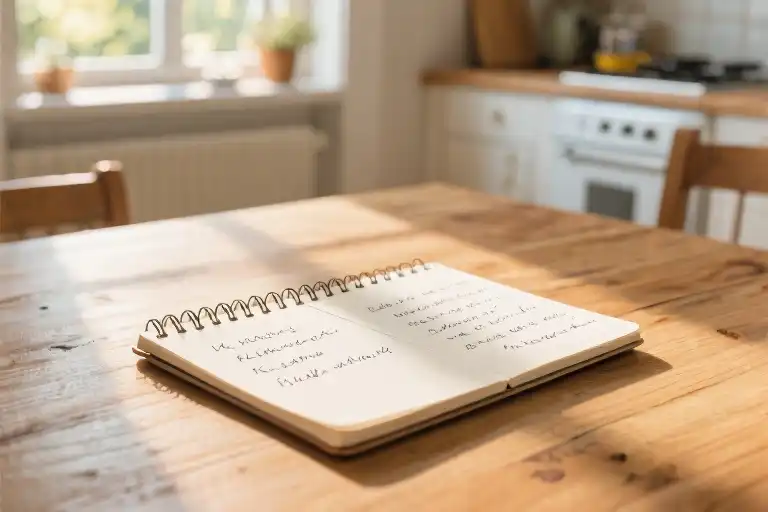“Do you want to get drinks after our shift?” Her voice cut through the clatter of closing time, her manicured nails drumming impatiently against the stainless steel counter. I kept wiping the same spot – my third pass over the already immaculate surface – buying time to process the invitation from the last person I expected to ask.
We were textbook workplace opposites. Me: the quiet college freshman meticulously folding napkins. Her: the boisterous graduate who’d shout orders across the kitchen with equal ease. Three months of shared shifts had cemented my assumptions – she was everything I found exhausting. The way she’d hijack customer interactions I was handling. How she’d rearrange my perfectly stocked condiment stations. That infuriating habit of calling me “kiddo” despite our four-year age difference.
First Impressions vs. Reality
What psychologists call the ‘primacy effect’ explains why initial judgments stick. Research shows we form lasting impressions within 1/10th of a second of meeting someone – often based on superficial traits like extroversion.
The walk-in fridge door slammed behind us as we finished inventory. “So?” She raised an eyebrow, tomato sauce streaking her apron from tonight’s rush. Something about her expectant stance – hip cocked, pen tucked behind her ear – made “Erm, ok” tumble out before my social anxiety could veto it. That two-syllable surrender would unknowingly crack open sixteen years of unlikely friendship.
Our clashing work styles suddenly made sense under the neon bar lights. Her “bossiness” was efficiency honed waiting tables through college. My “standoffishness” stemmed from new-job nerves. As tequila loosened tongues, we discovered our differences weren’t barriers but complementary strengths – her boldness balanced my caution, my planning anchored her spontaneity. By last call, we’d dissected everything from childhood trauma to dream careers, the ice between us melted by shared laughter at terrible pickup lines.
For young professionals navigating workplace relationships, this moment captures a critical insight: Initial friction often signals potential for powerful complementary connections when we move beyond surface judgments.
The restaurant where we’d silently judged each other became our origin story. Later, it would be the place we celebrated her promotion, mourned my breakup, and eventually brought our toddlers for grilled cheese – two women who chose curiosity over comfort, and gained a lifetime of inside jokes in return.
The Unexpected Invitation
Her fingernails tapped an impatient rhythm against the cash register counter. A faint stain from tonight’s pasta special streaked across her server apron. “Do you want to get drinks after our shift?”
I froze mid-wipe, the already-clean counter receiving its third unnecessary pass with my rag. This was the last person I expected to ask me that question. For months, we’d moved through our restaurant shifts like opposing magnets – her loud laughter cutting through my quiet focus, my meticulous side-work clashing with her “good enough” approach.
Three distinct conflicts played through my mind:
- The time she’d snatched a customer’s order pad from my hands (“You’re too slow!”)
- Her eye-roll when I realigned the dessert forks (“They’re fine!”)
- That humiliating staff meeting where she’d called me “Miss Perfect” to everyone’s laughter
My throat tightened. Social invitations always triggered this physiological chain reaction: sweaty palms, accelerated heartbeat, and that familiar script scrolling through my mind – What will we talk about? What if it’s awkward? Why would she even want to hang out with me?
“Erm, ok,” I heard myself say, the words escaping before my anxiety could veto them. The moment stretched as I watched her expression shift from expectation to surprise to something resembling relief. Neither of us moved, the restaurant’s fluorescent lights buzzing overhead like the nervous energy between us.
Psychology Sidebar: Social Facilitation Theory
This tension illustrates the audience effect – people perform differently when others are present. My hesitation stemmed from anticipating evaluation (Will she judge my drink order? My conversation skills?). Research shows such anxiety decreases after initial interactions, when the “observer” becomes a collaborator in shared experience.
We walked to the neighborhood bar in a silence that felt neither comfortable nor hostile, but pregnant with possibility. Her keys jingled with each step, the rhythm syncopating with my racing thoughts. This simple “yes” represented more than accepting a drink – it meant stepping over the invisible line dividing coworkers from potential friends, crossing into uncharted social territory where first impressions could be rewritten.
As we pushed through the heavy oak door into the dimly lit bar, a wave of noise and warmth enveloped us. I inhaled the familiar scents of beer and fried food, noticing how different this environment felt without our uniforms and work roles defining us. She slid onto a barstool with practiced ease while I perched awkwardly on the edge of mine, both of us suddenly aware we were about to see each other in a new light – not as the “bossy server” and “uptight hostess,” but simply as two people figuring out if friendship was possible.
The Bar Where Differences Didn’t Matter
The dim lighting of that neighborhood bar became the unexpected stage where our differences stopped being barriers and started becoming conversation starters. Between sips of terrible tequila (her choice) and my safer gin tonic, the contrasts kept revealing themselves like layers of an onion we were too tipsy to notice we were peeling.
The Age Gap That Didn’t Gap
At eighteen, I was mapping out five-year plans between classes; at twenty-two, she was happily adrift after graduation. “You’ll learn to enjoy the freefall,” she laughed, stealing the lime wedge from my drink. Research shows age-diverse friendships boost cognitive flexibility (Harvard Study, 2021), but all we knew then was how to argue about 90s pop culture we’d both experienced at different life stages.
Relationship Status: It’s Complicated
Her stories about cohabitation fights over toothpaste caps fascinated my single self. My dramatic retellings of college dating made her sigh with secondhand nostalgia. Psychologists call this “perspective borrowing” – where opposite life phases create natural storytelling tension that strengthens bonds (Journal of Social Psychology). The bartender eventually joined our debate about whether living together ruins the magic (verdict: still undecided after sixteen years).
The Humor That Cemented Everything
Then came the moment that changed everything – when she delivered a pun so awful about the bar’s decor that I snorted my drink. The waiter’s eye-roll at our escalating bad jokes became our friendship’s founding myth. Studies on humor compatibility show that matching comedic timing predicts friendship longevity better than shared interests (Psychology Today). We’d accidentally discovered our glue.
Complementary Traits in Action
| My Traits | Her Traits | Synergy Effect | ||
|---|---|---|---|---|
| Approach to Problems | Overthinker | Leap-before-looking | Balanced decision-making | |
| Social Energy | Recharges alone | Thrives in crowds | Expanded social circle | |
| Life Philosophy | “But what if…” | “We’ll figure it out” | Risk-calibrated adventures |
That night taught me what researchers call “the complementarity principle” – where opposing traits create stability when they compensate for each other’s weaknesses (Social Personality Compass). Our differences didn’t divide us; they gave us more to teach each other. By last call, we weren’t just coworkers who tolerated each other – we were co-conspirators planning our next adventure, differences now serving as inside jokes rather than divides.
The Five-Year Adventure
Our friendship unfolded like a series of Polaroid snapshots – vivid, slightly chaotic, and impossible to arrange in perfect order. That first drunken night at the bar became the opening scene of what we now call “The Glory Years,” a five-chapter saga written in airport departure lounges, wedding champagne toasts, and the fluorescent glow of 24-hour convenience stores.
Scenes from a Friendship
Airport Terminal, 3AM
Her: Waving frantically from the security line as I arrived breathlessly with minutes to spare. Me: The perpetually late one who somehow always made it, thanks to her strategic early arrivals. Our first trip together revealed the complementary rhythm that would define our travels – her meticulous planning creating space for my spontaneous detours.
Wedding Dance Floor, Midnight
The photo shows us mid-laugh, shoes discarded, my veil tangled in her bracelet. She’d been my only bridesmaid who understood when I panicked about the seating chart. “Just seat me with the fun drunks,” she’d said, crystallizing our shared belief that connection trumps perfection.
Tokyo Backstreet, 2017
The infamous “Lost in Translation” moment came during our ambitious (read: poorly planned) trip to Japan. Neither of us spoke Japanese, the map was wrong, and we’d wandered into a residential area after dark. Where others might panic, we turned it into an improv game – pointing at random house lights and inventing stories about the families inside. That night birthed our travel motto: “Wrong turns make the best stories.”
The Complementary Equation
A psychologist might call it personality complementarity, but we had our own metrics:
pie title Friendship ROI
"Emergency Calls Answered" : 28
"Stupid Decisions Supported" : 22
"Uncomfortable Truths Delivered" : 19
"Inappropriate Laughter Shared" : 31Our differences became strategic advantages. Her extroversion pulled me into conversations I’d have avoided; my caution prevented at least three potential international incidents (that Tokyo taxi incident doesn’t count). Where she charged ahead, I asked questions. Where I overthought, she acted. The math was undeniable – we were better together.
The Mischief Scale
If friendship had a Richter scale, our seismic moments would include:
- The Great Cake Heist (2014): Her 25th birthday involved “borrowing” a bakery display cake after hours (we left payment and a very confused apology note)
- The Wedding Crash (2015): Not ours – we just looked good in pastels and knew how to work a buffet line
- The CVS Epiphany (2016): A 2AM convenience store run where we simultaneously realized adult life was just figuring it out daily
These weren’t just adventures – they were stress tests for our friendship. Every messy, unplanned moment revealed new layers of trust and understanding. The girl I’d once dismissed as “too much” became the person who knew exactly how much was enough – whether that meant pushing me to try karaoke or recognizing when I needed quiet companionship.
Sixteen years later, we still measure our friendship in inside jokes and emergency contacts. But those five glory years? They taught us that the best friendships aren’t about similarity – they’re about showing up, again and again, for the person who turns your differences into strengths.
Sixteen Years and Counting
The real test of any friendship isn’t how you navigate drunken adventures or spontaneous trips—it’s how you weather the seismic shifts of adulthood together. When my once-boyfriend-obsessed friend became a mother before I’d even considered kids, and when my career-driven life suddenly seemed at odds with her diaper-changing reality, we faced our greatest divergence yet.
Parenting Styles and Late-Night Texts
Our first major parenting clash came when her toddler threw a restaurant tantrum. Pre-motherhood me would have judged; now I simply slid over the emergency lollipop I’d started carrying in my purse. We’d learned to bridge our differences through what we call “The 3AM Rule”—any parenting debate that happens via text after midnight gets automatically archived until coffee hours. This unspoken agreement saved our friendship through sleep regression phases and my steep learning curve as an honorary aunt.
The Annual Trip Tradition
Amidst the chaos of careers and carpools, we instituted what’s now our sacred ritual: a three-day getaway every September. No kids, no partners, just the two of us recreating the magic of those early bar nights—though now we’re more likely to critique hotel mattresses than cute bartenders. These trips became our relationship reset button, where we:
- Recalibrate through uninterrupted conversation
- Remember why our differences actually work
- Create new inside jokes to sustain us through daily routines
Last year’s highlight? Getting hopelessly lost in a Tokyo department store despite having a combined three language apps—proving some things never change.
Your Friendship Challenge
If our story proves anything, it’s that the most unlikely connections often yield the richest rewards. Here’s my challenge to you:
- Identify one person in your life who seems like your polar opposite
- Initiate a low-stakes hangout (coffee > multi-day trips for beginners)
- Look for one unexpected commonality
Sixteen years later, I still can’t explain why our friendship works—only that it does, beautifully. The loud, bold girl who interrupted my cleaning routine became the first person I call with news, good or bad. And when our kids (biological and honorary) eventually roll their eyes at our ancient inside jokes, we’ll just start planning our retirement home shenanigans instead.
Pro tip: Track your friendship milestones like we do—our shared Notes app document titled “Reasons We’re Still Friends” currently has 427 entries and counting.
The Full Circle Moment
Now it’s my turn to tap impatiently on her kitchen counter while she finishes washing dishes. “So… drinks this Friday?” I ask with the same casual tone she used sixteen years ago. The roles have reversed, but the friendship remains unchanged – perhaps even stronger after surviving career changes, cross-country moves, and now parenting toddlers who share our stubborn streaks.
Friendship Quality Checklist
We developed this unofficial gauge over years of shared experiences:
- Survival Rating
✅ Slept in same bed during 3am airport layovers
✅ Endured each other’s questionable haircut phases
✅ Survived The Great Tokyo Subway Incident of 2012 - Growth Markers
▢ Still laugh at the same stupid jokes
▢ Can sit in comfortable silence
▢ Argue about parenting styles but respect differences - Investment Returns
💰 1,824+ shared meals
💰 37 last-minute rescues (flat tires/broken hearts)
💰 Infinite inside jokes
#UnlikelyFriendChallenge
This is where your story begins. We’re collecting real experiences that prove opposites don’t just attract – they create unbreakable bonds. Share yours using #UnlikelyFriendChallenge and:
- Tag someone who “shouldn’t” be your friend (but totally is)
- Describe your first awkward interaction
- Reveal what bridges your differences
The best submissions will feature in our next workplace friendship guide. Because sometimes the people who irritate us most at first glance end up being the ones who know exactly when we need that after-work drink – and exactly how we take it.
P.S. Still have that cocktail napkin from our first bar outing. Your doodles were terrible then and still are.





